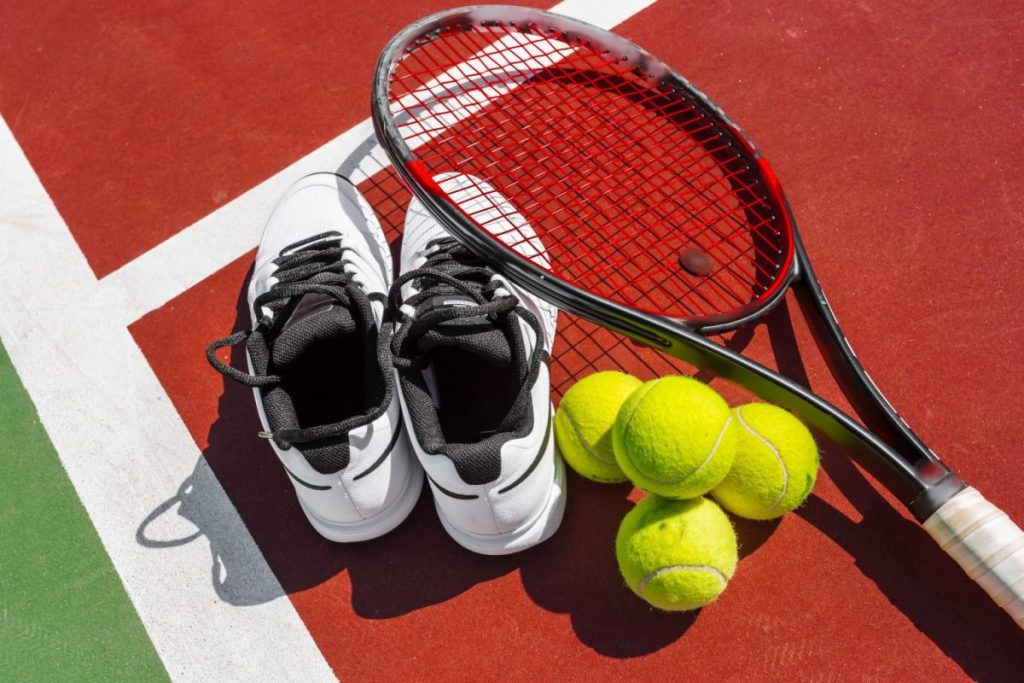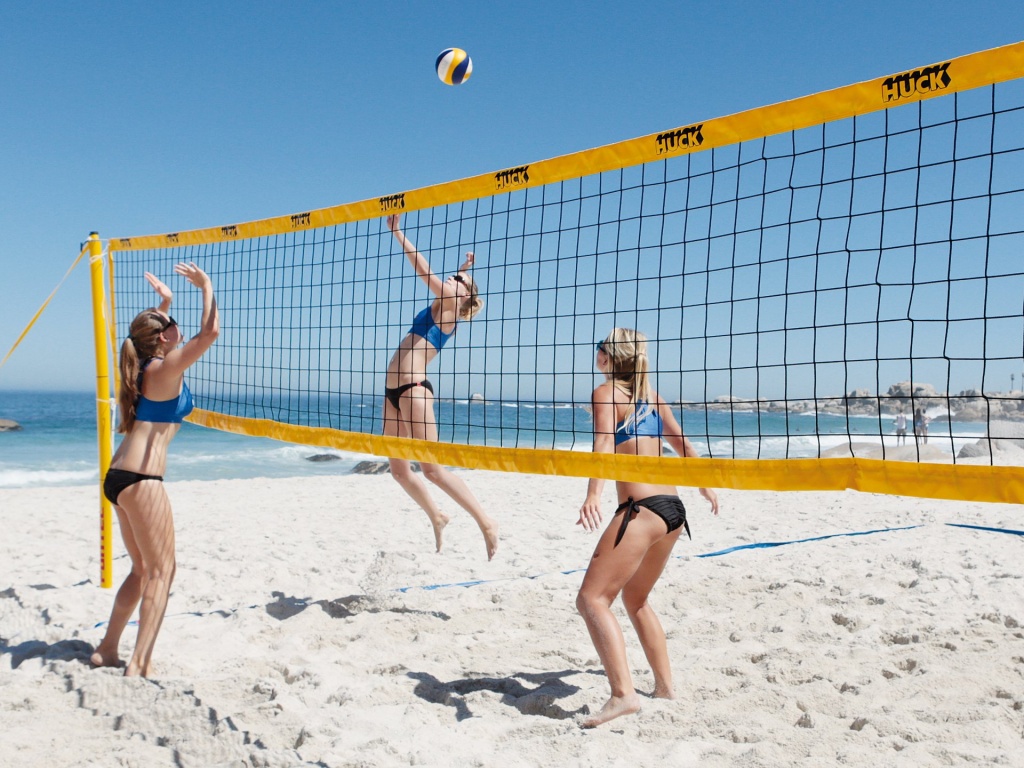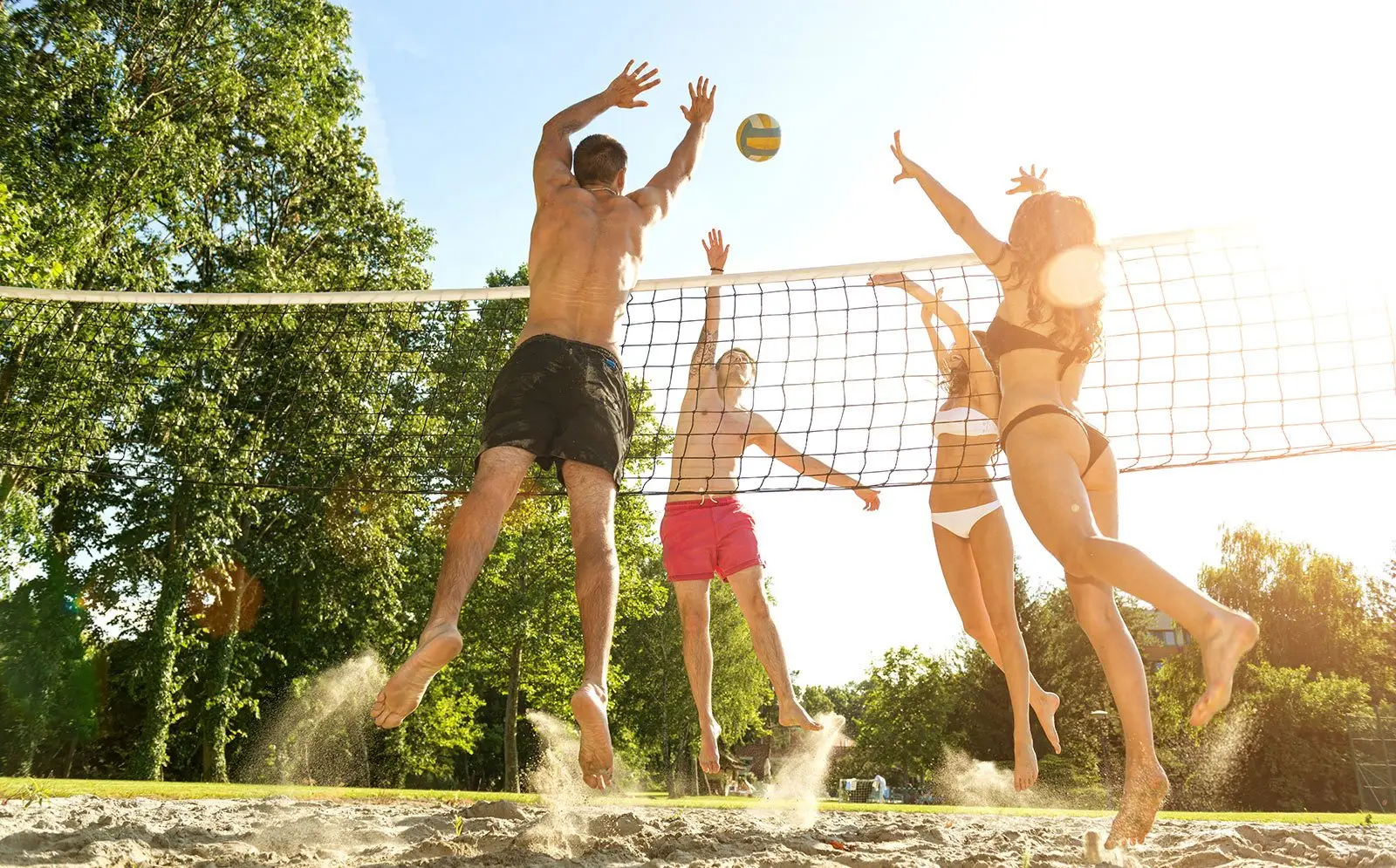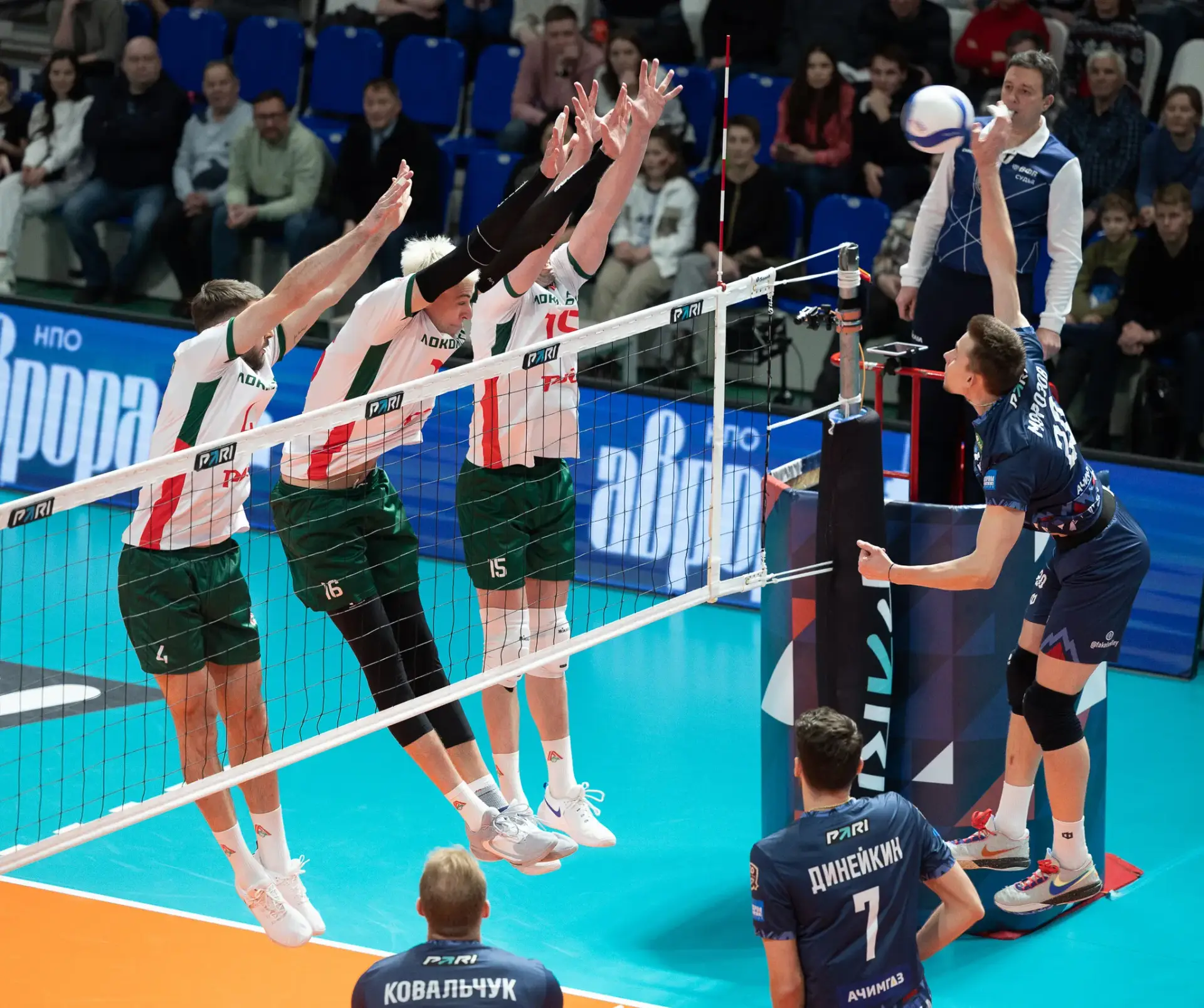Beach volleyball is not just a beachside pastime, but a full-fledged sport that combines physical exertion, tactical thinking, and teamwork. It is popular in different countries due to its accessibility, spectacle, and health benefits. The combination of sun, water, sand, and movement creates ideal conditions for maintaining fitness and a cheerful mood.
Beach Volleyball: Training Process and Physical Preparation
Any path to success starts with preparation. Beach volleyball requires special endurance from the player – the sandy surface complicates movement and increases stress on joints and muscles. Therefore, training requires adaptation. Special attention is paid to developing balance, leg strength, and coordination of movements. The focus is not only on strength training but also on exercises for posture and spine health, which are important for injury prevention.

Sessions start with warm-ups – the complex includes jumps, joint rotations, and bends. Then comes the technique practice: serving, receiving, passing, blocking, attacking. All actions are honed in conditions of an unstable surface, which stimulates the strengthening of stabilizing muscles and develops a sense of balance.
Equipment and Protection on the Court
 The approach to equipment should be deliberate. Footwear is usually not used – most people play barefoot, which improves traction with the surface. However, in some cases, special socks for burns or protective sandals are used. Clothing should be light, well-ventilated, and not restrict movement.
The approach to equipment should be deliberate. Footwear is usually not used – most people play barefoot, which improves traction with the surface. However, in some cases, special socks for burns or protective sandals are used. Clothing should be light, well-ventilated, and not restrict movement.
Sun protection glasses and headgear become essential. Considering the high activity in the sun, protection from ultraviolet rays is critically important. It is also important to remember to use sunscreen, especially during midday hours.
To minimize the risk of injuries, it is recommended to use finger tapes or soft elbow pads, especially for beginners. This approach reduces the likelihood of strains and allows for a safer entry into the training rhythm.
How to Play Beach Volleyball: Rules and Specifics of the Beach Format
Beach volleyball has its differences from the classic indoor version. The court is smaller (8×16 m), and the number of players per team is two. This makes each action more significant, increasing the responsibility for the ball. Some elements from the classic version are prohibited, such as setting with two hands from below with ball rotation. The serving technique is also adapted to the conditions: powerful jump serves are common, and serving to the area with maximum amplitude.
The tactics on the sand are built differently – taking into account the wind, unevenness, and energy expenditure for movement. The strategy requires not only strength but also the ability to feel the ball, choose positions, and act synchronously with the partner.
Health Benefits of Beach Volleyball
From a physiological point of view, beach volleyball actively engages the cardiovascular system, improves endurance, and burns a significant amount of calories. The sand cushions the impact on the spine and joints, making the game less injury-prone compared to the classic version on a hard surface.
Regularly noted are the positive effects on posture, flexibility, and overall strengthening of the musculoskeletal system. Playing engages deep core muscles, thigh muscles, calf muscles, and shoulder girdle. In addition to physical benefits, there is an improvement in emotional well-being: active play outdoors helps reduce stress levels, improve sleep, and mood.
Beach Volleyball: Serving Technique and Basic Actions
One of the key elements of the game remains the serve. For beginners, it is important to start with simple but accurate stationary serves. Then, you can move on to jump serves. The technique requires proper body positioning, a powerful swing, and focus on the trajectory. It is important to avoid common mistakes: body collapse, twisting, wrist underdevelopment. Within the training process, special attention is paid to serving, as it can set the tone for the entire play.
In addition to serving, key actions include: blocking, receiving, and attacking. Proper landing technique is especially important – training on sand requires stability and softness in movements, reducing stress on the knees and back.
How to Avoid Injuries in Beach Volleyball?
To ensure that beach volleyball brings only enjoyment, a competent approach to injury prevention is necessary. The main risks are strains, dislocations, and finger injuries. They often occur due to incorrect landing or blocking techniques. It is important to pay attention to regular warm-ups, strengthening stabilizing muscles, and following proper technique!
While sand softens impacts, the unstable surface increases the demands on balance. Beginners should not overlook basic exercises for balance and overall coordination. Additionally, it is important to monitor recovery, alternate between exertion and rest, ensure an adequate intake of fluids and minerals – especially in hot weather.
Useful Recommendations for Beginners in Beach Volleyball
Before starting regular sessions, it is important to internalize several basic tips that will help progress faster and avoid common mistakes. Here are the main ones:
- choose a flat, clean beach area without shells, rocks, and foreign objects;
- pay attention to footwear or foot protection in high sand temperatures;
- watch the landing technique, especially after jumps and blocks;
- do not skip warm-ups and cool-downs – reduces the risk of injuries;
- moderate the intensity, especially at the initial stage of training.
Regularly following these recommendations increases safety and comfort during beach volleyball, making the training process stable and effective.
Main Equipment and Useful Accessories
For beginner athletes, it is advisable to prepare a minimal set of equipment that provides comfort and protection. The list includes:
- light breathable synthetic attire;
- sunscreen with high SPF;
- headgear and glasses with UV filter;
- water bottle with electrolytes;
- burn protection socks or beach sandals if needed;
- soft protective elements (tapes, elbow pads).
Properly selected equipment contributes not only to productive play but also to health preservation, especially in the hot season.

Conclusion
 Beach volleyball is a dynamic, accessible, and invigorating sport that combines physical activity, emotions, and vibrant interaction. It helps develop strength, endurance, and coordination while supporting emotional well-being and strengthening health.
Beach volleyball is a dynamic, accessible, and invigorating sport that combines physical activity, emotions, and vibrant interaction. It helps develop strength, endurance, and coordination while supporting emotional well-being and strengthening health.
With proper organization of training, consideration of recommendations, and gradual progress, the game can become not only a hobby but also part of an active lifestyle. It becomes especially important for those who value team spirit, movement, and the sunny atmosphere of the sporting summer.
 en
en  de
de  ar
ar  es
es  hi
hi  fr
fr  nl
nl  it
it  pt
pt  el
el 










